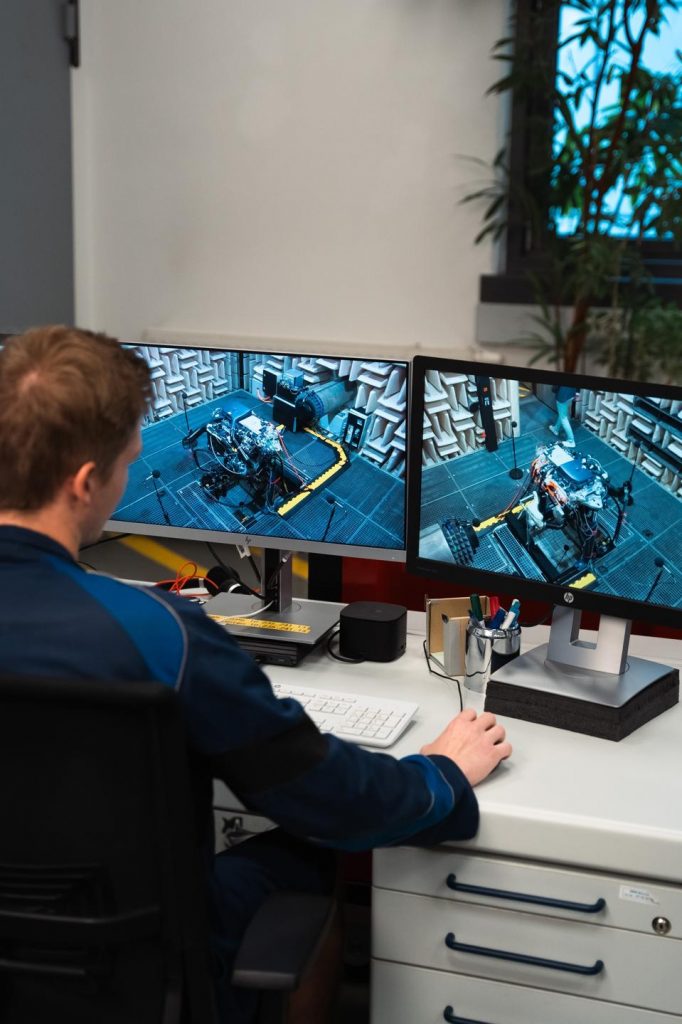Hydrogen fuel cell prototypes are already rolling out of the BMW Group’s Steyr production plant ahead of a 2028 production launch.
The plant, retooled over the last year, will deliver the third generation of BMW’s fuel-cell systems, and the first to make it to mainstream production in a fuel-cell electric vehicle.
It is around 25% smaller than the fuel cell used in the BMW iX5 fuel cell vehicles, built as a pilot program for German fleets in 2023, but with the same power, thanks to a jump in power density.
BMW claims its Neue Klasse chassis architecture, which will debut in the iX3 in Munich next week, has been pre-engineered to accept fuel-cell EV powertrains. That makes the iX3 and the larger iX5 probable production targets for fuel cells, according to BMW’s Board Member for Development, Joachim Post.
“The launch of the first eer fuel-cell production model from BMW in 2028 will add another exceptionally efficient high-performance drive system with zero emissions to our technology-open product portfolio,” he said.
“The choice of Steyr as the production location clearly demonstrates our commitment to a European innovation footprint.
“The BMW competence centers in Munich and Steyr have a key role to play in the development of pioneering fuel-cell systems.
After dabbling in liquid hydrogen combustion engines, BMW’s first generation fuel-cell drive system, in a 5251A in 2014, was lifted from Toyota.
Toyota and BMW have worked closely together on fuel cells, with BMW developing the overall fuel-cell systems and Toyota doing the cells.
The third generation of BMW’s fuel-cell technology is a joint development with Toyota, aimed at both passenger and commercial vehicle applications.
BMW claims the third generation will have greater range, increased power output and lower energy consumption than its predecessor.
While remaining, technically, battery-electric vehicles, fuel-cell EVs can run smaller, lighter, cheaper battery packs because the fuel-cells can generate electricity on the run to keep their batteries at a useful state of charge.
They do this by a chemical reaction of hydrogen and oxygen gasses, with the vehicle simply drawing oxygen from the air. The only waste product is water vapor.
How Do Fuel-Cell EVs work?
Where battery electric vehicles (BEVs) are fully charged with energy from an electric power source, fuel-cell EVs (FCEVs) pick up the oxygen and produce the energy they need along the drive.
They’re effectively self-charging EVs, with their power not coming from large, heavy, expensive batteries, but from the hydrogen fuel cells.
They convert the hydrogen into electricity via a built-in power station, the fuel cell, which uses reverse electrolysis, where the hydrogen reacts with the oxygen. That separates the H2 molecules into protons and electrons, and it’s these electrons that deliver the current that powers the vehicles.
With the BMW/Toyota process, the energy generated either moves to the electric motor directly or to a battery, which is more of a buffer, or temporary holding area, than with typical BEV batteries.
BMW claims that the major advantange of its FCEV is that refuelling takes just three minutes, compared to more than half an hour for a typical BEV, with the second-generation iX5 delivering more than 500km of range on a single tank. And there’s no range reduction in cold weather.
The BMW iX5 Hydrogen… And Friends
With 6kg of hydrogen compressed to 700bar and frozen down to -40 degrees Celsius, BMW claimed a 313-mile range from its iX5 Hydrogen “proof of concept” prototype in 2023.
It ran the same single electric motor BMW used on the iX5, sitting on the rear wheels and capable of 396bhp and 524lb ft of torque.
Of course, BMW isn’t the only company to have sent FCEVs out into the world on hope – hope that people will buy them, and hope that hydrogen filling stations finally become less rare than unicorns.
Hyundai has built the Nexo, Audi has had an array of prototypes and BMW’s own development partner, Toyota, famously built the Mirai. First shown at the Los Angeles auto show in 2014, the Mirai found less than 30,000 buyers over nearly 10 years, but Toyota never considered the mid-sized hatch a flop.

